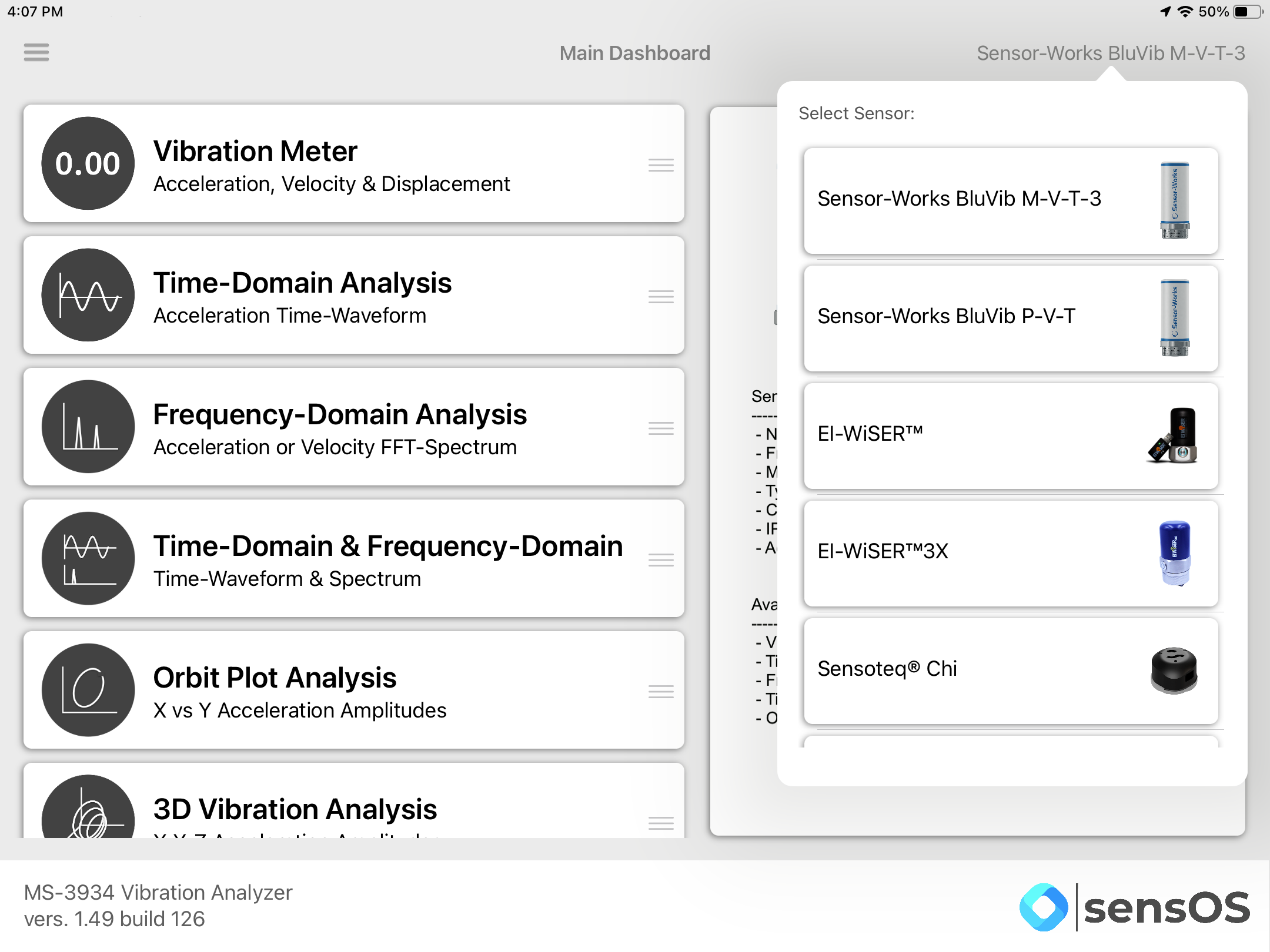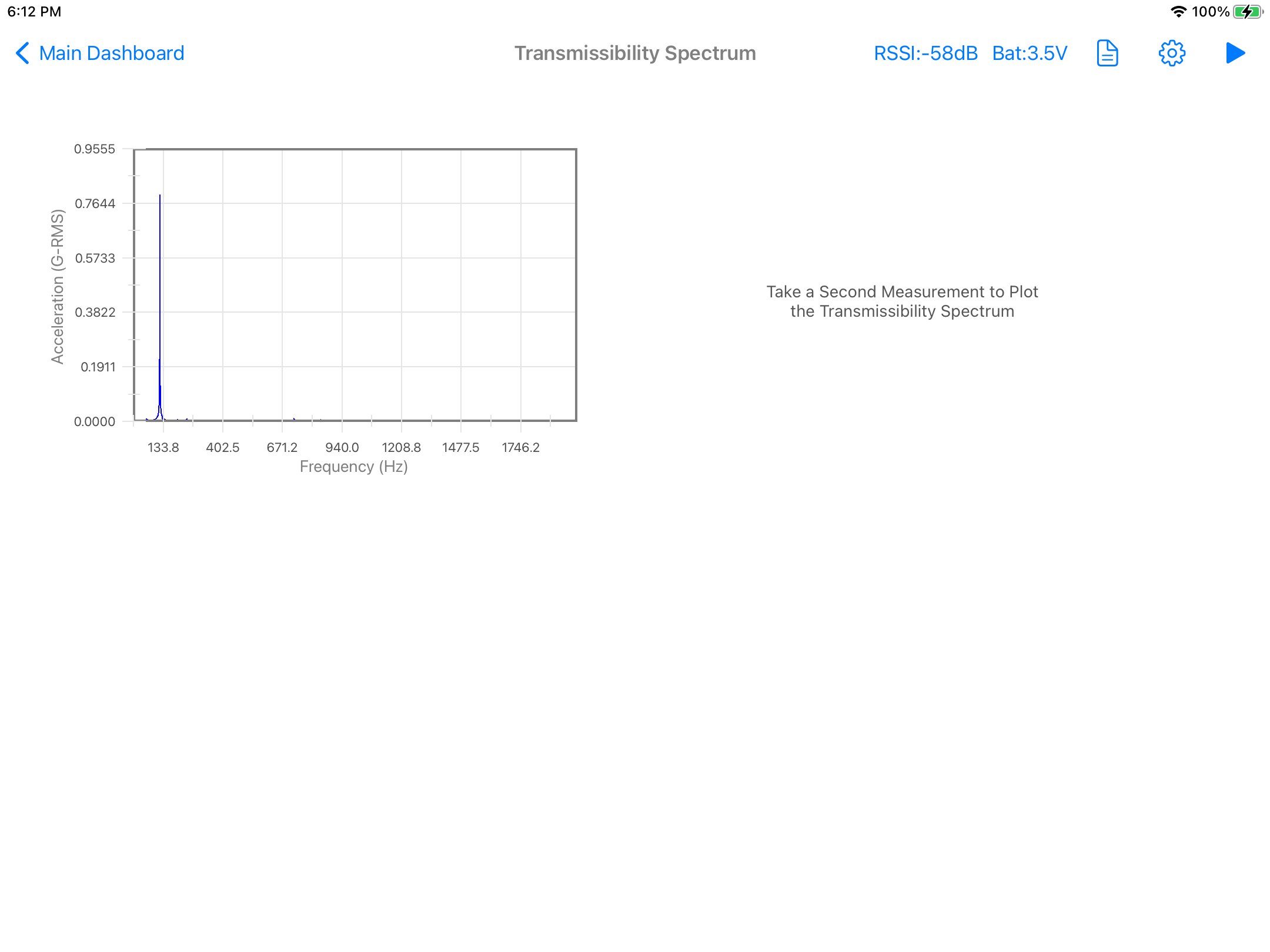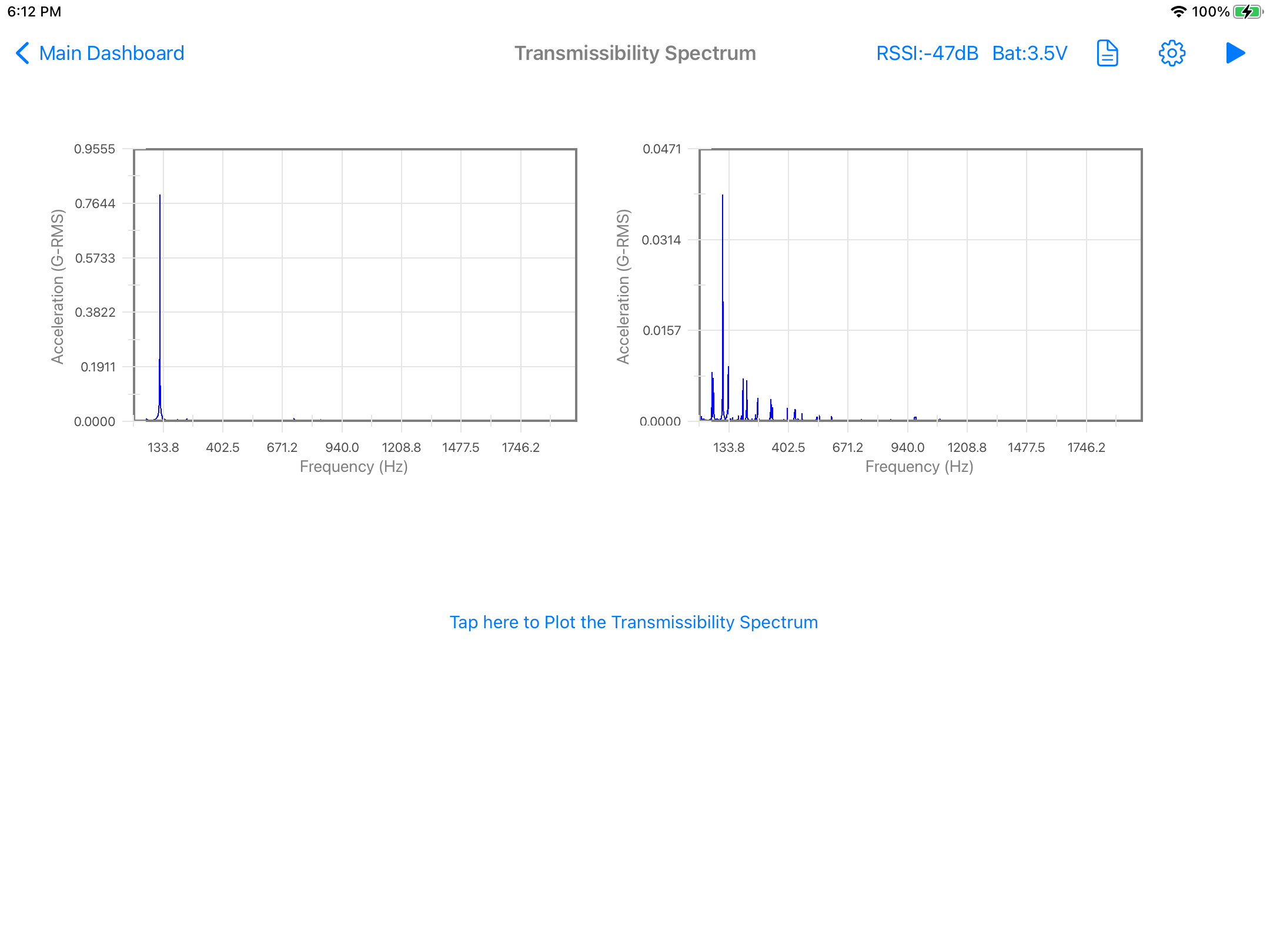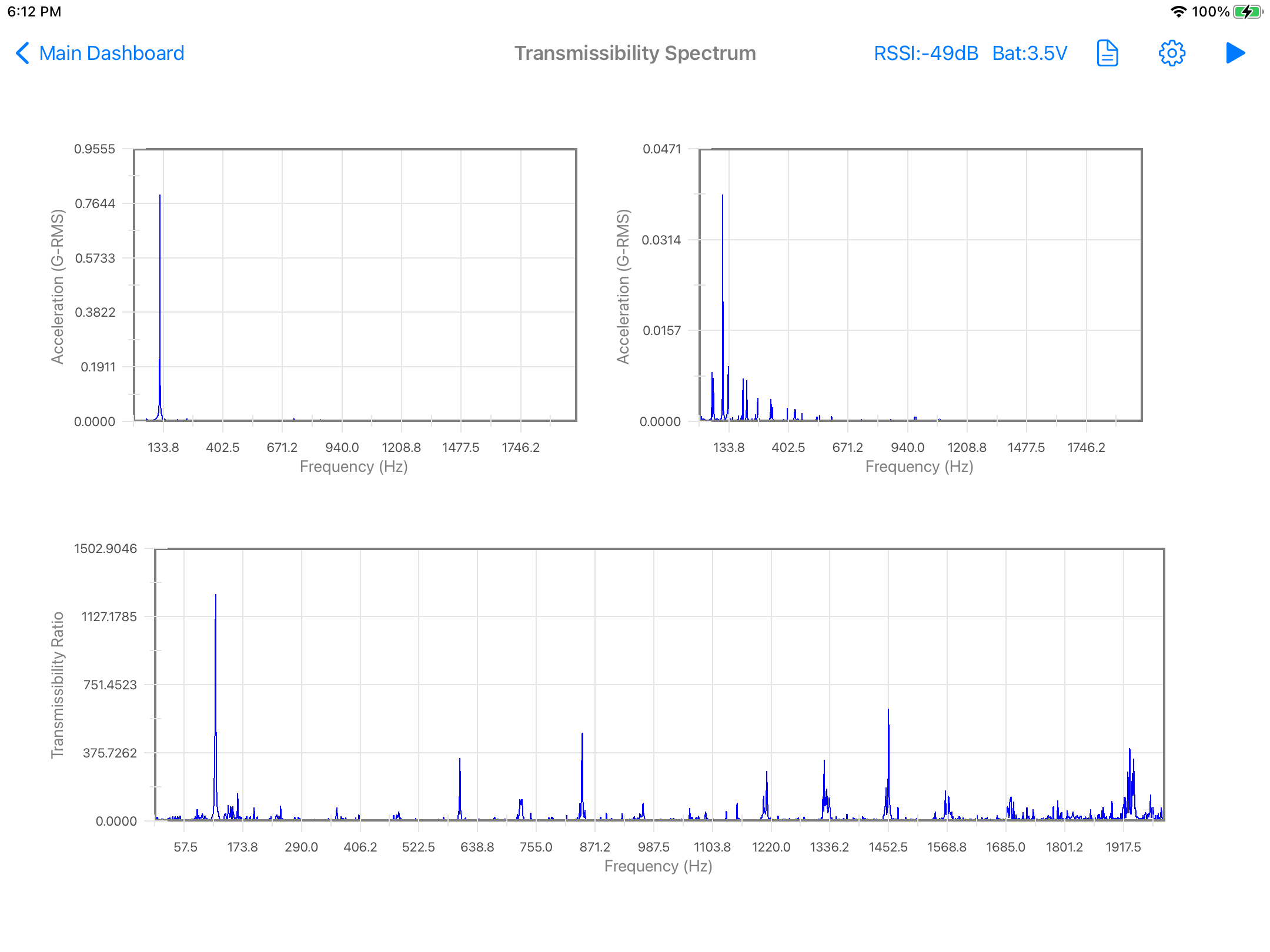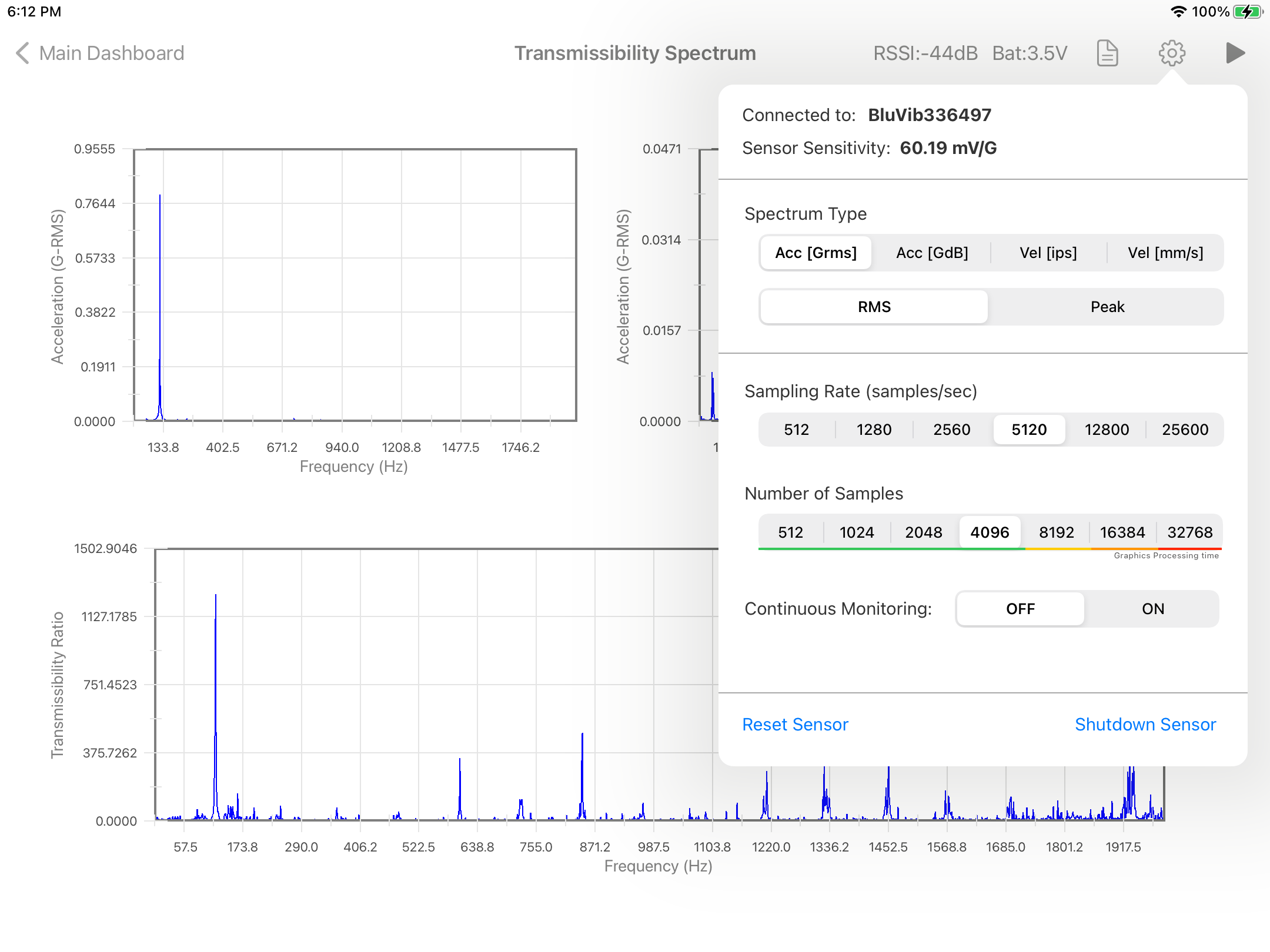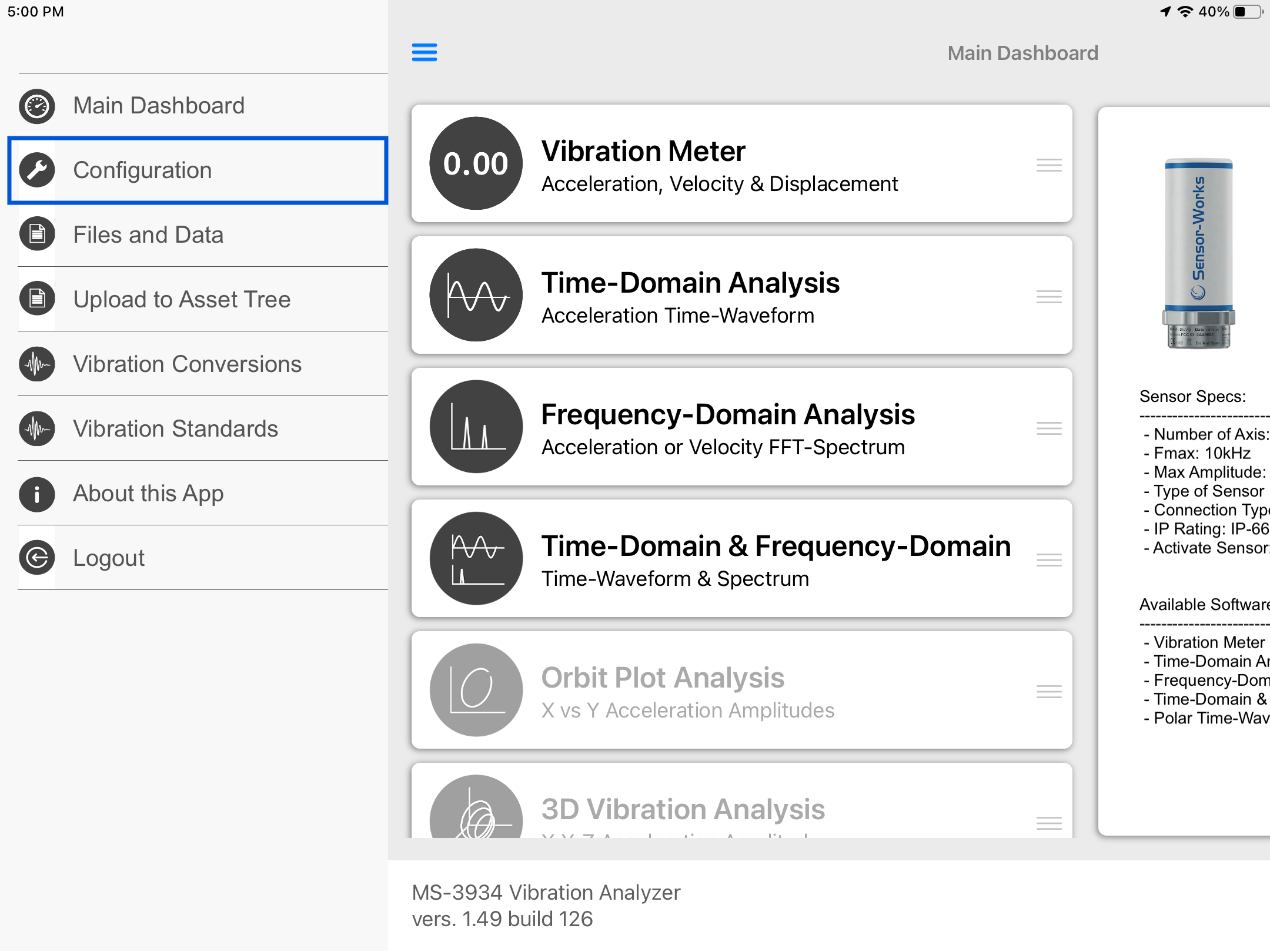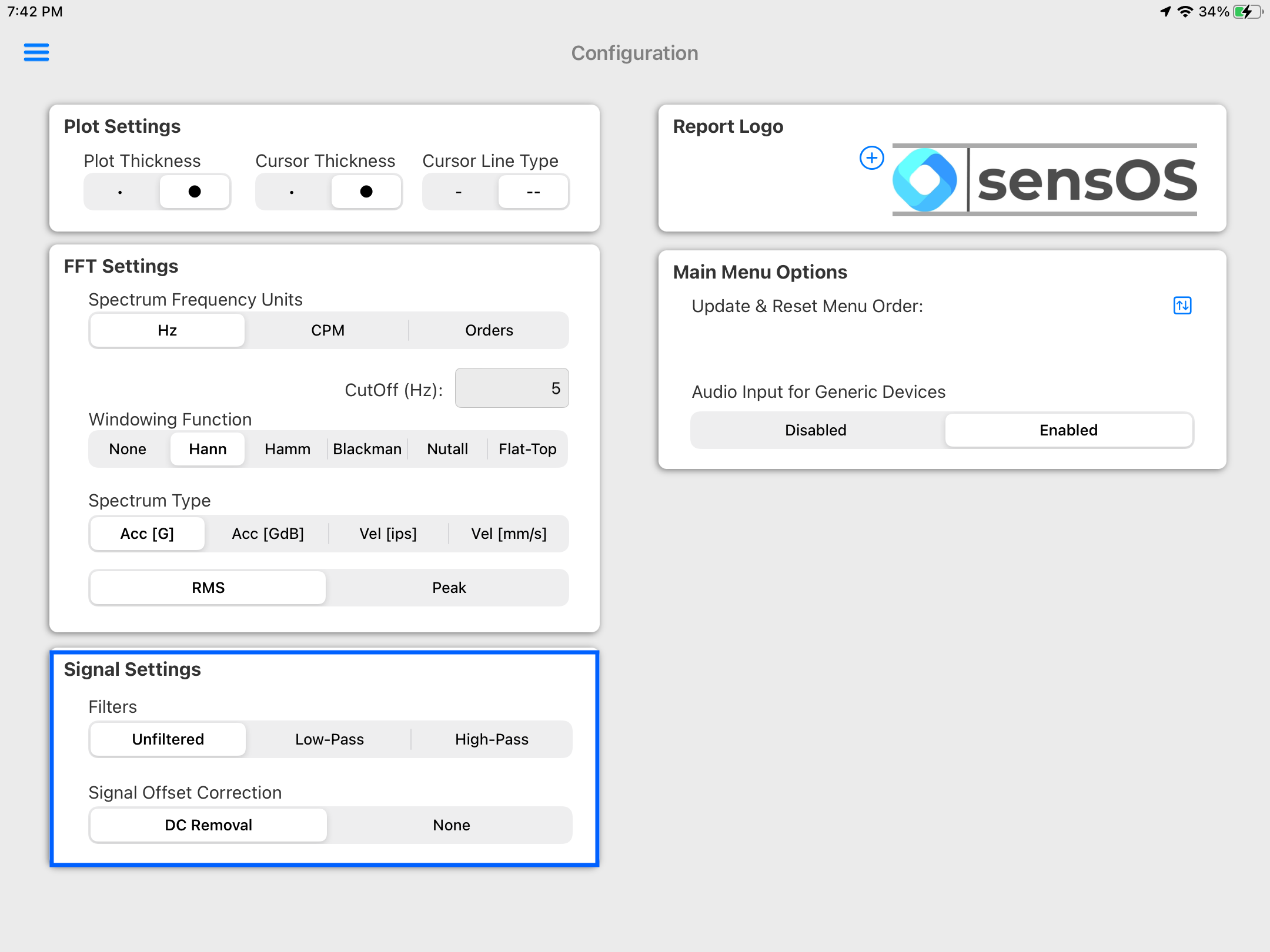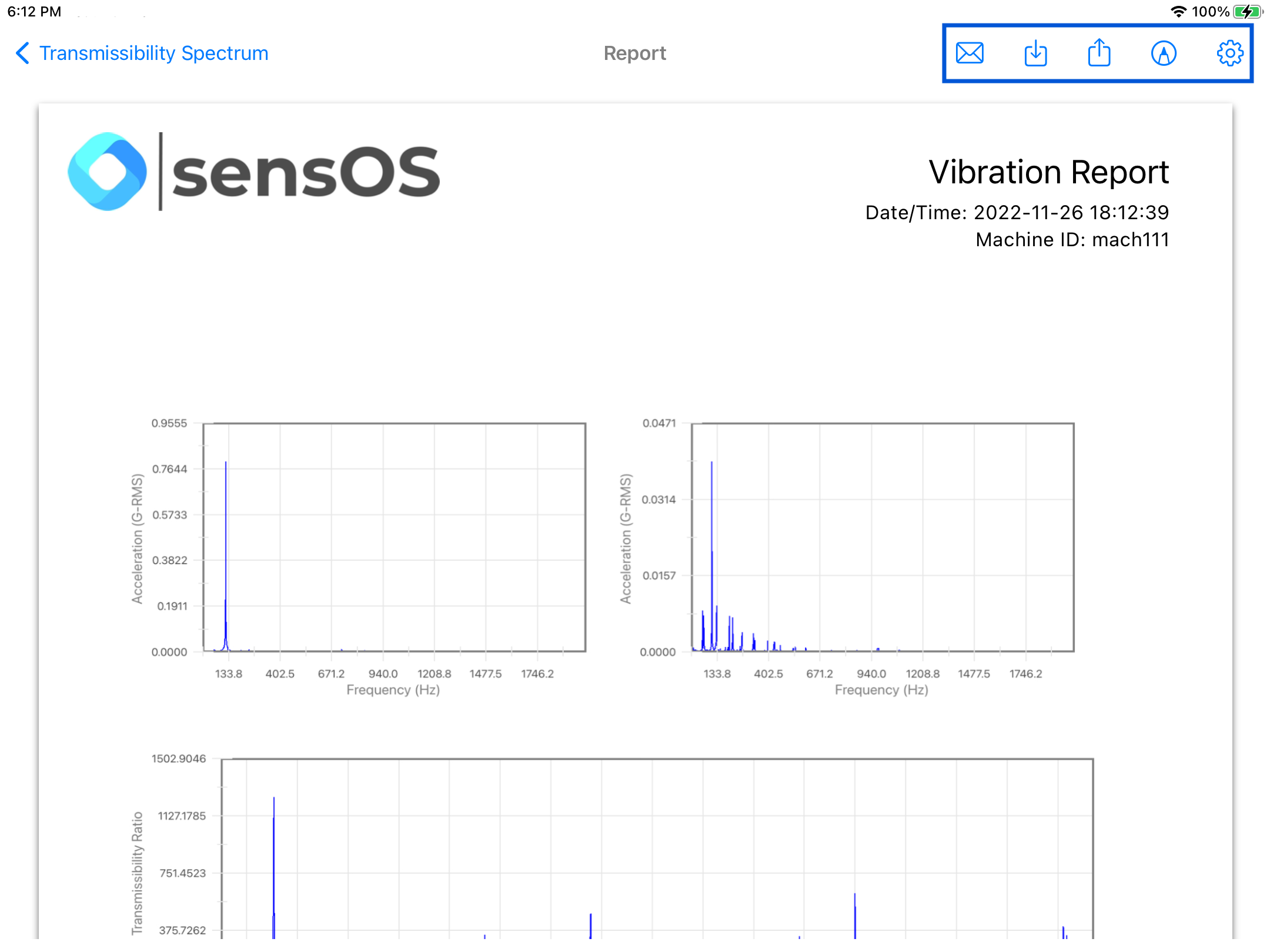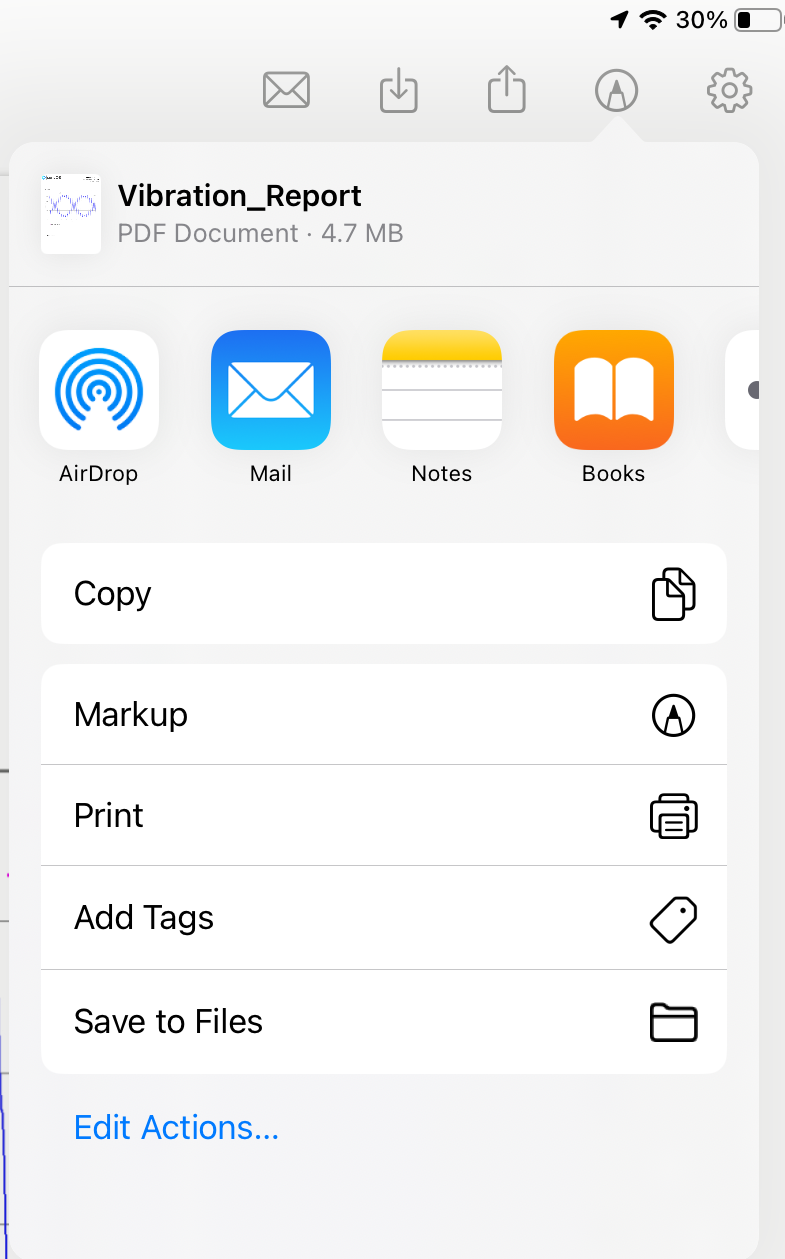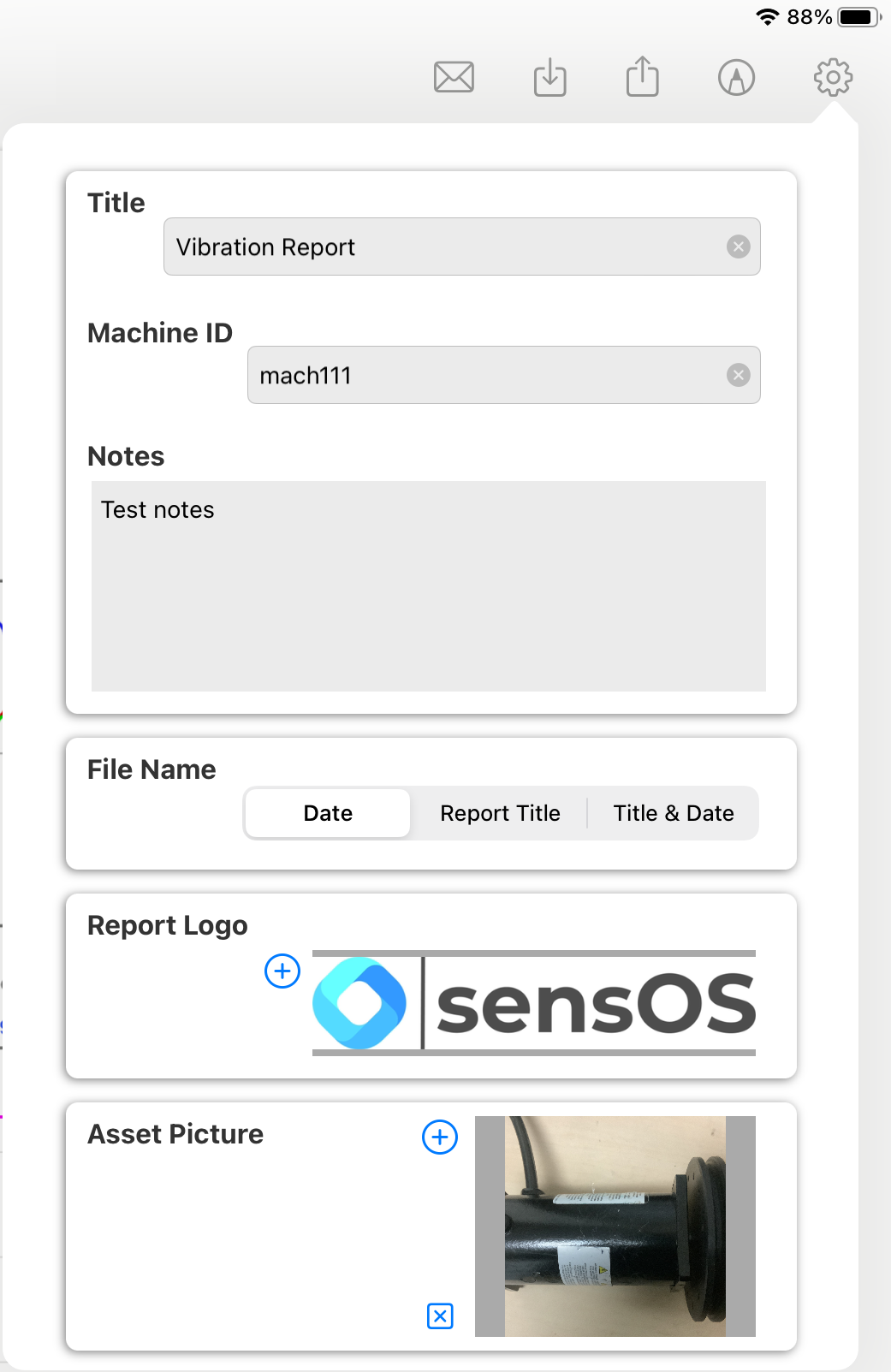Documentation
3934 Transmissibility Spectrum
MS-3934: Vibration Analysis Studio iPadOS® version
- Version: 1.49 (b.126)
- Author: D. Bukowitz
- Created: 05 Mar, 2021
- Update: 21 Nov, 2022
If you have any questions that are beyond the scope of this document, Please feel free to email via info@sens-os.com
Description
The transmissibility analysis can be used to determine the vibration amplification between to different locations, i.e. it is very helpful to analyze vibration transmitted from the machine to the base
Compatibility
This module is compatible with the following sensors:
- SensorWorks BluVib M-V-T-3 (3-Axis)
- SensorWorks BluVib P-V-T (1-Axis)
- CTC WA-102 (1-Axis)
- Digiducer (1-Axis)
- Digital ICP Signal Conditiones (2-Axis)
Main Menu
- Tap on the Sensor name button to open the list of available sensors, and select the sensor type from the list
- Scroll the list of functionalities and select Transmissibility Spectrum.
Note: The user can change the order of the functionalities in the list by dragging it from the right button on each cell
Transmissibility Spectrum
- After connecting/pairing the sensor, place the sensor on the first location then click on the start button to take a reading.
- Place the sensor on the second location then click on the start button again to take a second reading.
- Click on the blue text 'Tap here to Plot the Transmissibility Spectrum' (see item 2) to generate the transmissibility spectrum plot. To zoom the plot use both fingers to pinch in and out, to pan use one finger and swipe left or right. Other options, such as DC-Removal and Filters can be modified in the general Configuration view. See Configuration item 2 for more details
- The settings pop-up will allow the user to change the sampling rate and the number of samples. The user can change the type of spectrum from Acceleration to Velocity, the transmissibility spectrum amplitude will always be a ratio. The continuous mode will not work when performing the difference spectrum.
- A full pdf report can be generated, saved or sent by clicking on the report button, see more info in: Generating a pdf Report.
Note: For simplicity, a single-channel sensor will be used to explain all the functionalities
Configuration
- From the Main menu, click the top left menu button to open the left drawer with more options. Select 'Configuration' from the left menu
- The Signal Settings will affect the raw data directly. The DC-Removal is ON by default by can be turned OFF here. Also a general Low-Pass or High_pass filter can be applied to the signal.
Note: This selection will affect all reading's raw data for all modules
Report
- Clicking on the Report button will open a new view with the pdf report.
- The report view contains several options in the top bar menu: 1:Send by Email, 2:Save pdf locally, 3:Upload Report to the Cloud bucket, 4:Markup and 5:Report Configuration
- The markup tool allows the user to copy the report to the clipboard, send it by Airdrop or any other messaging app, email it, print it or saved it to Files. The markup tool will open the standard tool to paint on the pdf report.
- The Report Configuration pop-up allows the user to enter the Report Title, Machine ID and Notes to be added to the report. Here the user can also select a logo for the report and include a picture of the asset that will be added in a new page in the report. The report file name be default is the actual dat and time, but the user can change it to the title name of the report or to both, the title name and date.
Changelog
See what's new added, changed, fixed, improved or updated in the latest versions.
Version 1.49 b.126 (21 Nov, 2022)
- Optimized Optimized for iPadOS 16
Version 1.39 b.112 (02 Jun, 2022)
- Fixed Bug Fixed
Version 1.02 b.52 (05 Mar, 2021)
Initial Release
